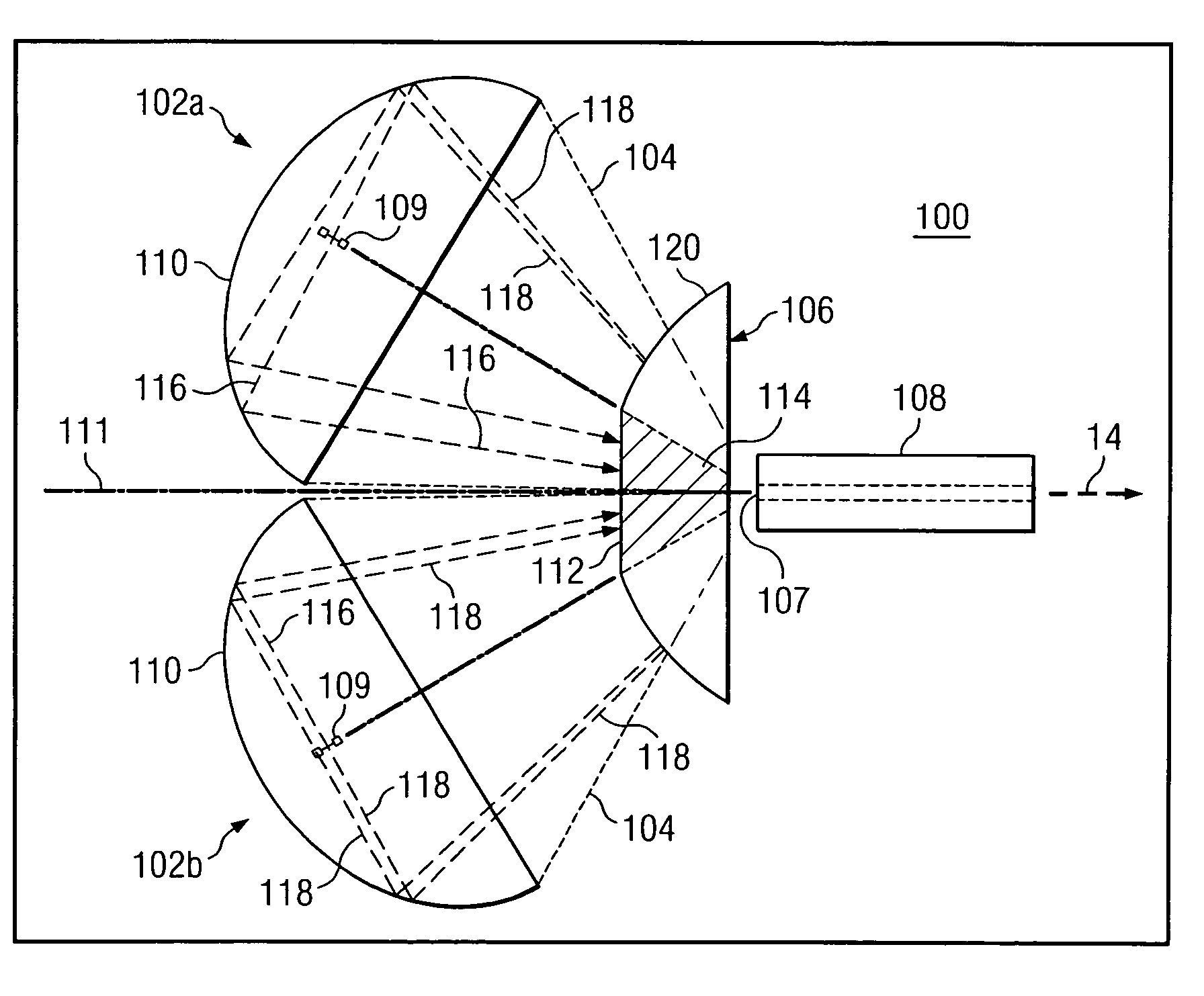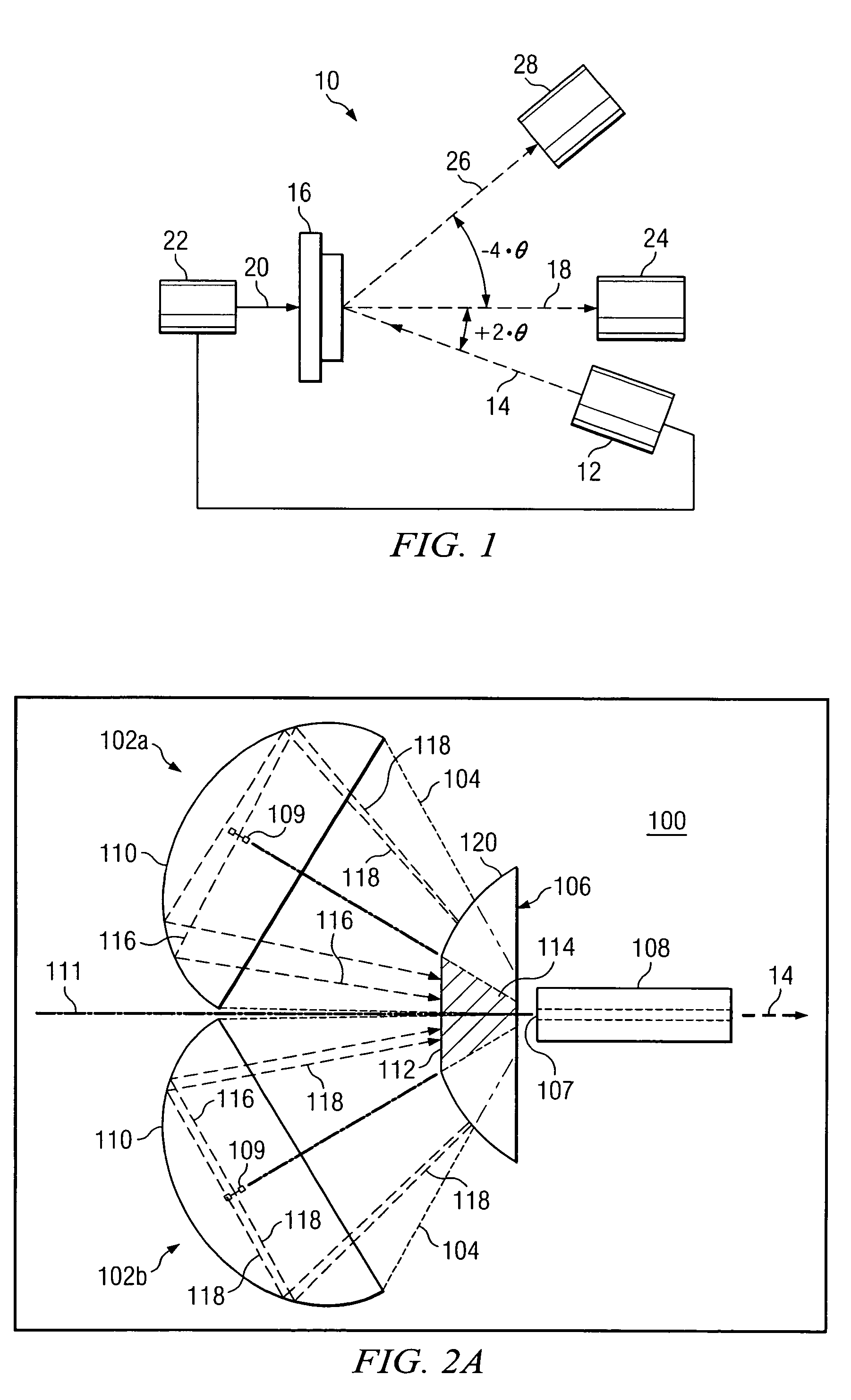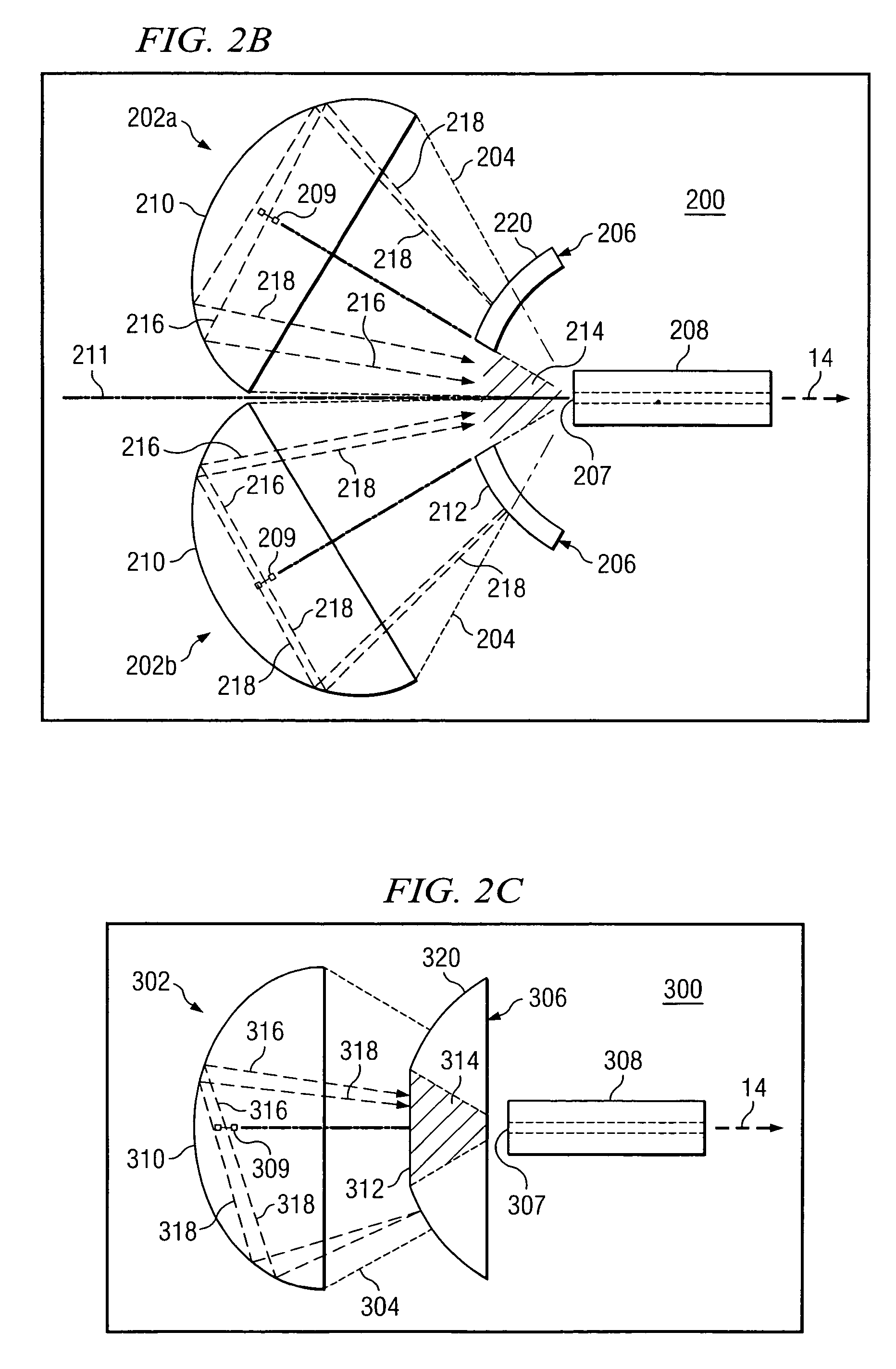Multiple light source illumination for image display systems
a multi-source, light source technology, applied in the direction of instruments, lighting and heating apparatus, fibre light guides, etc., can solve the problems of limited amount of light within a particular wavelength range that may be accepted by the spatial light modulator, insufficient power of light originating from light sources emitting narrow bands of light to enable the light modulator, etc., to achieve the effect of increasing the intensity of ligh
- Summary
- Abstract
- Description
- Claims
- Application Information
AI Technical Summary
Benefits of technology
Problems solved by technology
Method used
Image
Examples
Embodiment Construction
[0011]FIG. 1 is a block diagram of one embodiment of a portion of a projection display system 10. In this example, projection display system 10 includes a light source module 12 capable of generating illumination light beams 14. Light beams 14 are directed from light source module 12 to a modulator 16. Modulator 16 may comprise any device capable of selectively communicating at least some of the received light beams along a projection light path 18. In various embodiments, modulator 16 may comprise a spatial light modulator, such as, for example, a liquid crystal display or a light emitting diode modulator.
[0012]In this particular embodiment, modulator 16 comprises a digital micro-mirror device (DMD). The DMD is a micro electromechanical device comprising an array of hundreds of thousands of tilting micro-mirrors. In a flat state, each micro-mirror may be substantially parallel to projection lens 24. From the flat state, the micro-mirrors may be tilted, for example, to a positive or...
PUM
 Login to View More
Login to View More Abstract
Description
Claims
Application Information
 Login to View More
Login to View More - R&D
- Intellectual Property
- Life Sciences
- Materials
- Tech Scout
- Unparalleled Data Quality
- Higher Quality Content
- 60% Fewer Hallucinations
Browse by: Latest US Patents, China's latest patents, Technical Efficacy Thesaurus, Application Domain, Technology Topic, Popular Technical Reports.
© 2025 PatSnap. All rights reserved.Legal|Privacy policy|Modern Slavery Act Transparency Statement|Sitemap|About US| Contact US: help@patsnap.com



